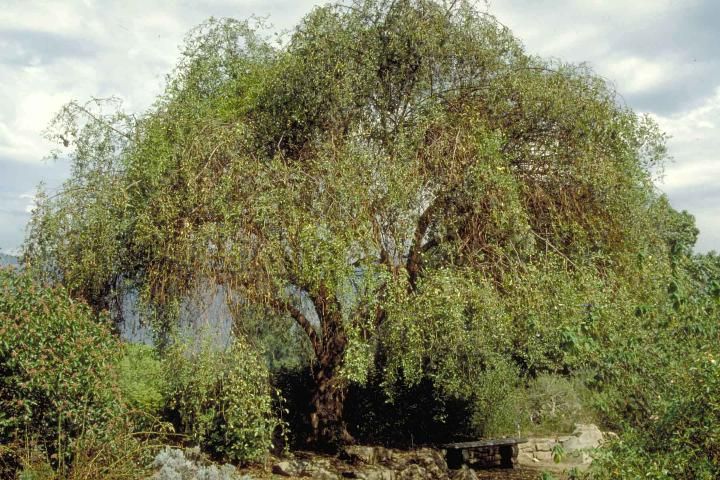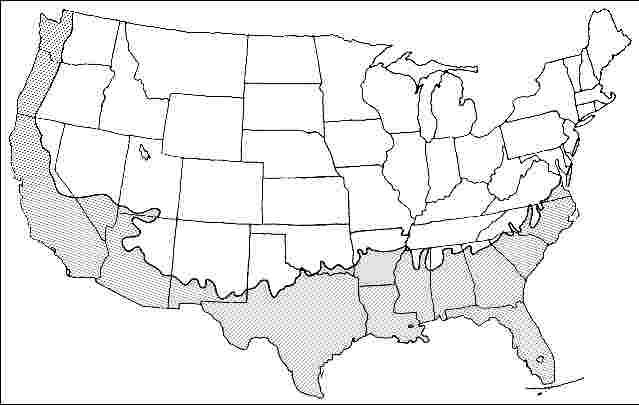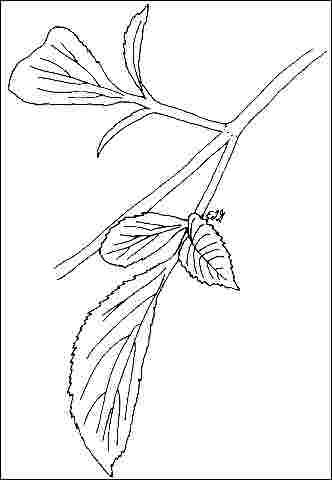Introduction
Mexican elder is a semi-evergreen small tree, reaching up to 30 feet in height. Most open-grown specimens do not reach this height as they grow wider than tall. The light green, thick, leathery, pinnately compound leaves are often browsed by deer and livestock. The four to eight-inch-wide, flat cymes of yellow/white blooms appear mainly from April to June but in its native habitat may also occur at various times throughout the year after heavy rains. The small, blue/black fruits which follow the blooms are quite popular with birds and can be used to make wine or pies, and were reportedly even dried by Indians to be used at a later time. Fruits appear white because they are covered with a thick, waxy coating. A dye can be made from the stems and has been used to color baskets.

Credit: Ed Gilman, UF/IFAS
General Information
Scientific name: Sambucus mexicana
Pronunciation: sam-BEW-kuss meck-sih-KAY-nuh
Common name(s): Mexican elder
Family: Caprifoliaceae
USDA hardiness zones: 7B through 10B (Fig. 2)
Origin: native to North America
Invasive potential: little invasive potential
Uses: reclamation; deck or patio; specimen; highway median
Availability: not native to North America

Description
Height: 15 to 25 feet
Spread: 25 to 35 feet
Crown uniformity: symmetrical
Crown shape: weeping, round
Crown density: moderate
Growth rate: slow
Texture: fine
Foliage
Leaf arrangement: opposite/subopposite (Fig. 3)
Leaf type: odd-pinnately compound, trifoliate
Leaf margin: serrate
Leaf shape: ovate, elliptic (oval)
Leaf venation: pinnate
Leaf type and persistence: semi-evergreen
Leaf blade length: 2 to 4 inches
Leaf color: green
Fall color: no color change
Fall characteristic: not showy

Flower
Flower color: white/cream/gray
Flower characteristics: showy
Fruit
Fruit shape: round
Fruit length: less than .5 inch
Fruit covering: fleshy
Fruit color: black, white/gray
Fruit characteristics: attracts birds; showy; fruit/leaves a litter problem
Trunk and Branches
Trunk/bark/branches: branches droop; showy; typically multi-trunked; thorns
Pruning requirement: needed for strong structure
Breakage: susceptible to breakage
Current year twig color: green, brown
Current year twig thickness: thick
Wood specific gravity: unknown
Culture
Light requirement: full sun
Soil tolerances: clay; sand; loam; acidic; alkaline; well-drained
Drought tolerance: high
Aerosol salt tolerance: unknown
Other
Roots: not a problem
Winter interest: yes
Outstanding tree: yes
Ozone sensitivity: sensitive
Verticillium wilt susceptibility: susceptible
Pest resistance: free of serious pests and diseases
Use and Management
Trees are best located in the open where they can develop their low, wide-spreading, uniform crown. It might be planted near a patio, or as a small shade tree in a backyard garden but the dropping fruit can be messy on brick, concrete and other hard surfaces. Young trees often require training and pruning to speed formation of a uniform crown. Save the more upright branches and remove the drooping ones to create greater clearance beneath the canopy.
Mexican elder should be grown in full sun on well-drained soil.
Propagation is by seed.
Pests and Diseases
No pests or diseases of major concern.